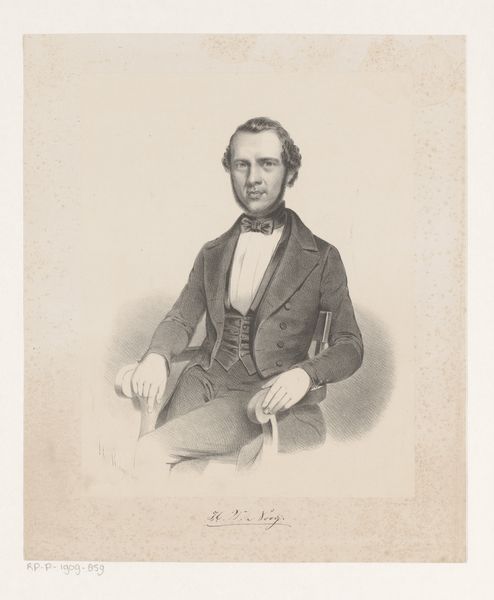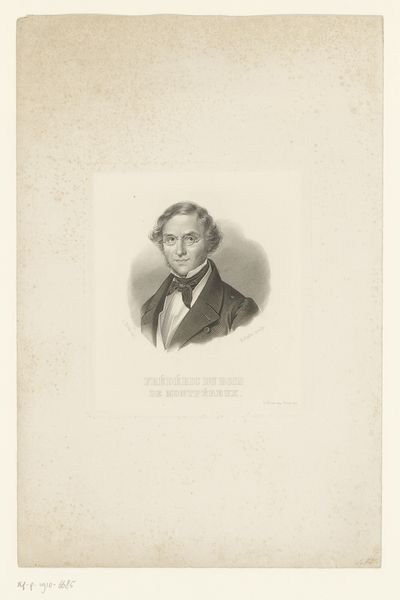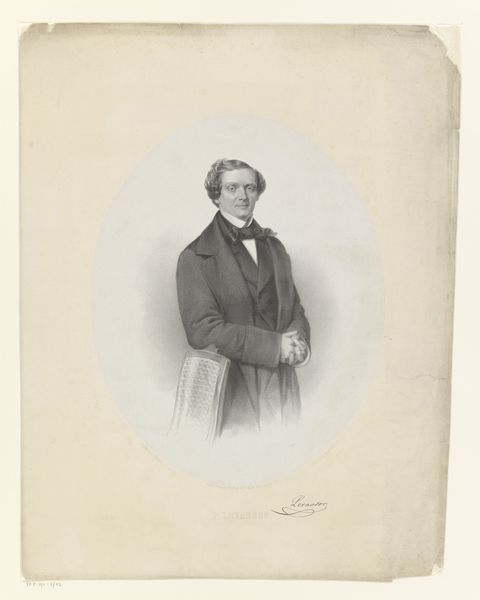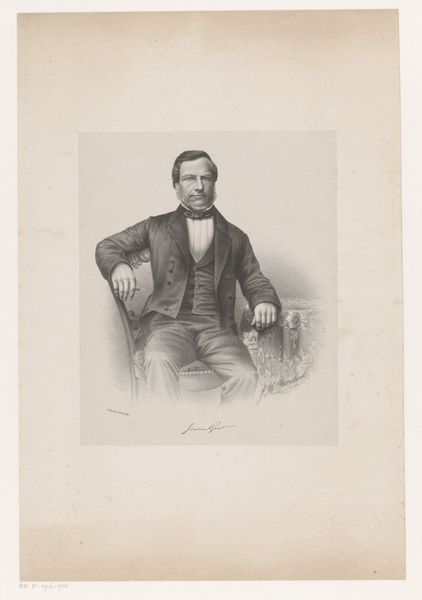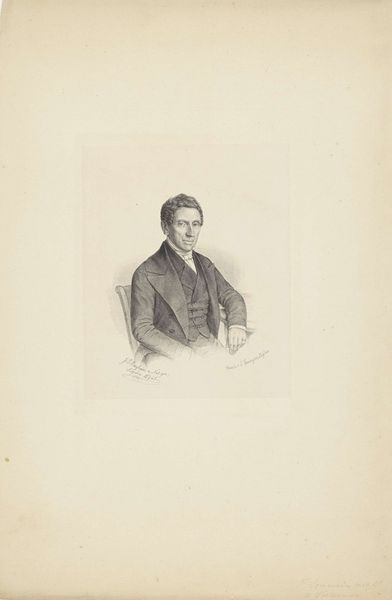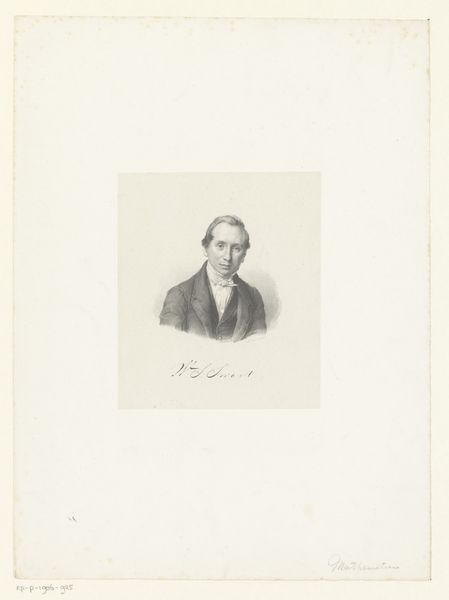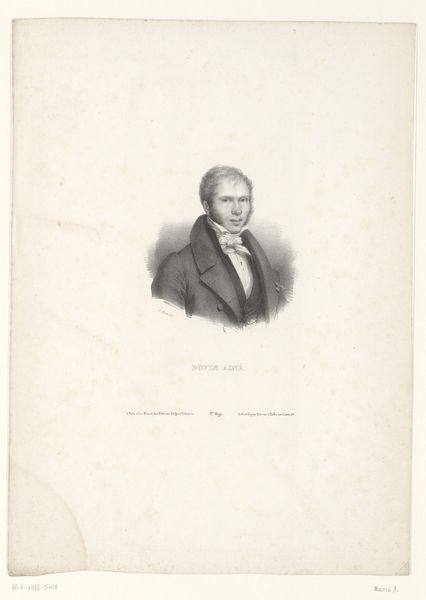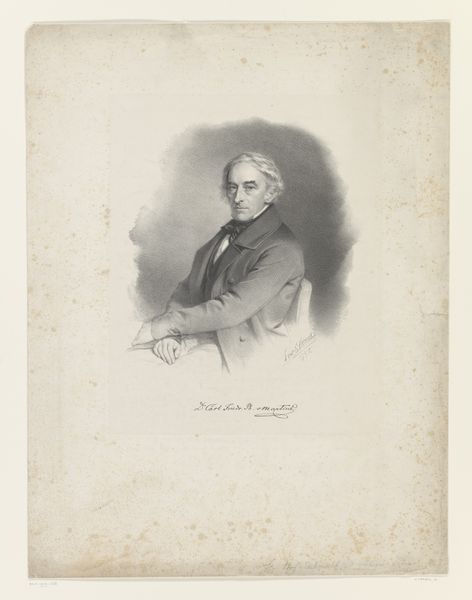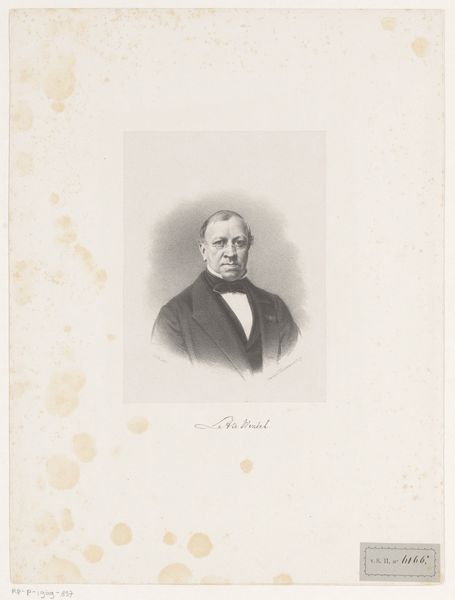
print, engraving
#
portrait
#
pencil drawn
# print
#
pencil sketch
#
old engraving style
#
pencil drawing
#
genre-painting
#
engraving
#
realism
Dimensions: 483 mm (height) x 320 mm (width) (bladmaal)
Curator: This is an engraving titled "Daniel Frederik Eschrich," created sometime between 1831 and 1874 by J.C. Nielsen. It’s currently held in the collection of the SMK, the Statens Museum for Kunst. Editor: My immediate impression is one of understated formality, perhaps even intellectual pensiveness. The monochrome palette concentrates attention on the textures achieved by the engraving technique. The subtle gradation of tones describes form precisely and economically. Curator: Indeed. Eschrich was a relatively obscure figure, a minor government official in Denmark. This portrait speaks to the democratization of portraiture during the 19th century. It wasn't just royalty and the wealthy who had their likeness captured, but also middle-class professionals. Editor: I agree. Look at the deliberate construction: the positioning of the subject near books suggests intellectual inclination, though this visual strategy echoes symbolic portraiture, where objects function as clues. Notice, too, the diagonal slant of the body in the chair against the vertical bookcase: composition and perspective offer psychological intrigue! Curator: And the very act of commissioning such a print suggests a desire for social visibility, a striving for upward mobility within a rigidly structured society. Eschrich wants to be seen as a man of learning and culture. These prints were easily reproducible, meaning many copies would have existed, maybe sent to family members, friends, or acquaintances. Editor: What strikes me also is the intimacy evoked through precise contouring and light contrast; though reproducible, it still feels personal—a glimpse into Eschrich's persona rather than a grand statement. Curator: Certainly. The artist and sitter consciously wanted to construct this very accessible public persona. But prints like these also played a vital role in forming national identities. People could see, consume, and familiarize themselves with representations of fellow citizens and leaders through such imagery. Editor: So the artwork becomes almost like a historical or political meme… fascinating. Now seeing the crosshatching and linear structures makes me wonder at its semiotic depth and implications, despite its relatively ordinary subject matter. Curator: Exactly. Hopefully, appreciating this subtle artwork will allow all of us to think differently about not only Denmark in the mid-19th century, but also its society and even ours! Editor: I am equally keen that listeners find new perspectives and understandings. With any luck, they also leave the museum thinking of ways the very elements and strokes that define images work upon us.
Comments
No comments
Be the first to comment and join the conversation on the ultimate creative platform.
